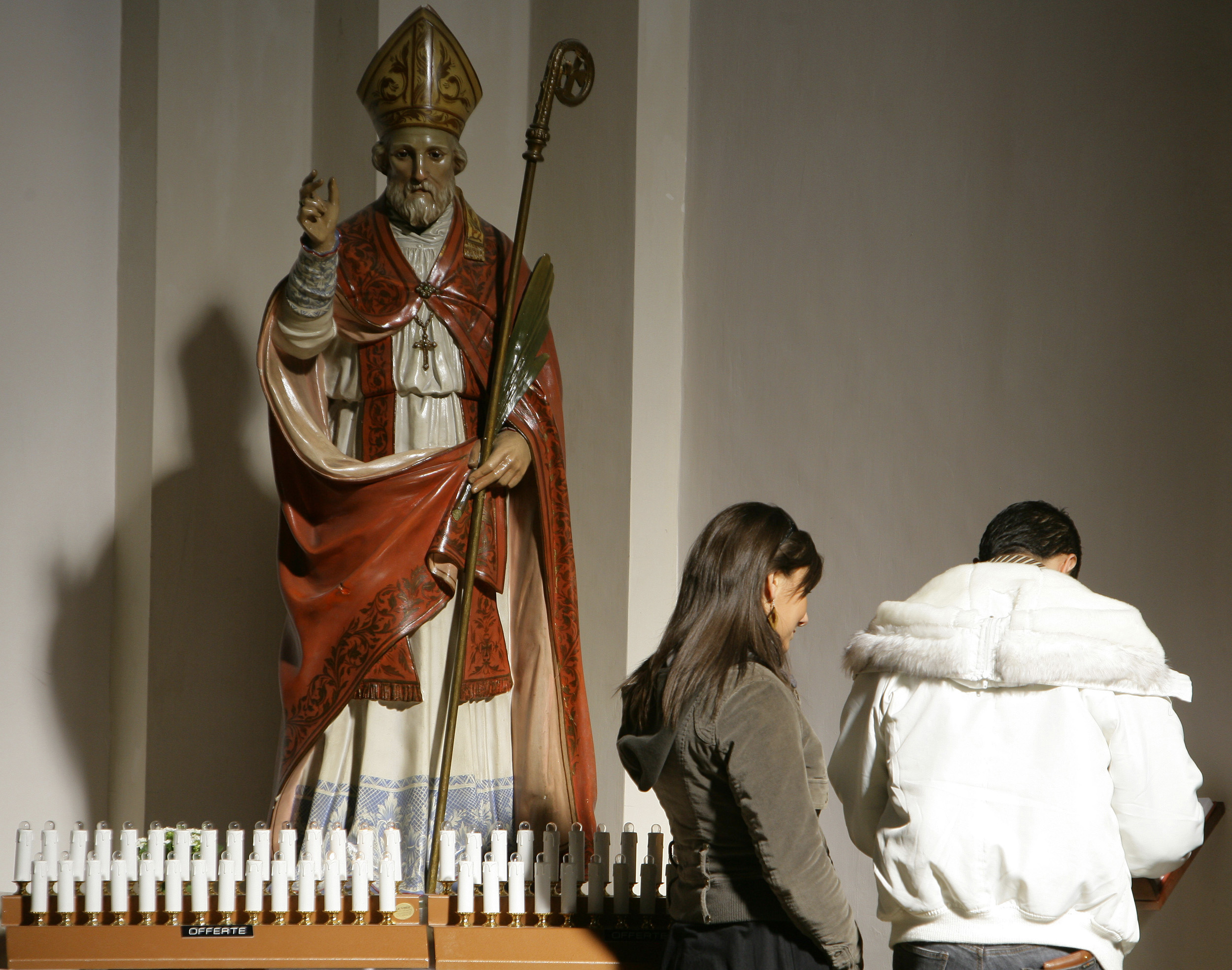- St. Valentine’s Day began as a feast day commemorating two different saints by the name of Valentine, though the liturgical celebrations bore no resemblance to the modern-day emphasis on love and courtship.
- The medieval English poet Geoffrey Chaucer first spread and popularized the notion of St. Valentine’s Day as a romantic holiday in the late 1300s, a characterization that was picked up by his contemporaries and has remained popular ever since.
- While the notion persists that Christians co-opted the pagan holiday Lupercalia and transformed it into St. Valentine’s Day, it is unfounded, as Christian leaders never made an attempt to modify Lupercalia but instead sought to destroy it and offered no replacement holiday.
Valentine’s Day started as an early saint’s feast day, but people have a medieval English poet to thank for today’s pressure to go on expensive dates.
Valentine’s Day began with early Christians’ veneration of two different saints, Valentine of Rome and Valentine of Tern. For all intents and purposes, the church’s veneration of the composite St. Valentine differed little from any other Christian saint’s feast day and did not feature any focus on love or celebration of courtship and marriage.

A couple stands in front of the St.Valentine’s statue inside the St. Valentine Basilica in Terni, Umbria, February 10, 2008. REUTERS/Daniele La Monaca (ITALY)
Legends concerning St. Valentine’s ancient defense of marriage, and many other of his purported deeds, have so little historical proof that the church ceased to venerate him in 1969, though they still recognize Valentine as a saint. So how did St. Valentine’s day become a celebration of romance? (RELATED: Here’s How Christians Celebrated Christmas Throughout The Ages)
Look no further than Geoffrey Chaucer.
The first recorded reference to St. Valentine’s day gifts as a courtship-themed holiday appeared in Geoffrey Chaucer’s poem “The Parlement of Foules,” written and published in the early 1380s. Chaucer referenced Valentine’s Day as the day “Whan euery bryd comyth there to chese his make” and young lovers follow suite.
Authors John Clanvowe, Oton de Grandson, and John Gower, who were contemporaries of Chaucer, also wrote of Valentine’s Day as a day of romance, though scholars generally believe that Chaucer was the first to do so and therefore popularized the idea, according to Interesting Literature.
Chaucer, however, may not have been referencing the traditional February 14 Valentines Day. Some scholars posit that he meant to reference May 3, the day on which bishop Valentine of Genoa died in 307 A.D., given the fact that he also referenced St. Valentine and bird courtship in a poem about the coming of summer and the fact that the engagement of his benefactor, Richard II, to Anne of Bohemia was announced on May 3.
The May 3 theory is disputed in academic circles, however, as historians note that it was a common belief in France and England in the middle ages that February 14 marked the day birds began to court. Regardless of which date Chaucer meant to reference, and which particular Saint Valentine he meant to venerate, his characterization of the holiday as one of romance has persisted ever since.
No comments:
Post a Comment